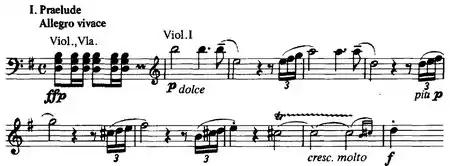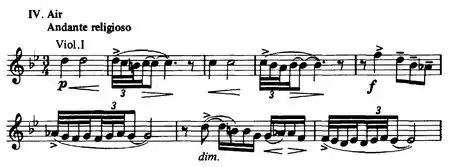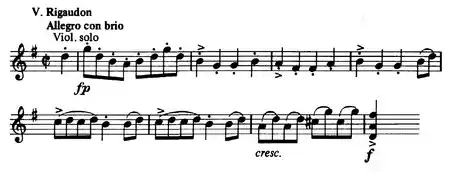Holberg Suite
The Holberg Suite, Op. 40, more properly "From Holberg's Time" (Norwegian: Fra Holbergs tid, German: Aus Holbergs Zeit), subtitled "Suite in olden style" (Norwegian: Suite i gammel stil, German: Suite im alten Stil), is a suite of five movements based on eighteenth-century dance forms, written by Edvard Grieg in 1884 to celebrate the 200th anniversary of the birth of Dano-Norwegian humanist playwright Ludvig Holberg.
It exemplifies nineteenth-century music which makes use of musical styles and forms from the preceding century. Although not as famous as Grieg's incidental music from Peer Gynt, which is itself usually performed as arranged in a pair of suites, many critics regard the works as of equal merit.[1]
Background
The Holberg Suite was originally composed for the piano, but a year later was adapted by Grieg himself for string orchestra. The suite consists of an introduction and a set of dances. It is an early essay in neoclassicism, an attempt to echo as much as was known in Grieg's time of the music of Holberg's era.[2]
Structure
The movements of the suite are:
- Praeludium (Allegro vivace)
- Sarabande (Andante)
- Gavotte (Allegretto)
- Air (Andante religioso)
- Rigaudon (Allegro con brio)
Notes
External links
- Holberg Suite: Scores at the International Music Score Library Project
- Performance of string orchestra version by A Far Cry from the Isabella Stewart Gardner Museum in MP3 format
- Holberg Suite playlist on YouTube, piano version by Joel Hastings





